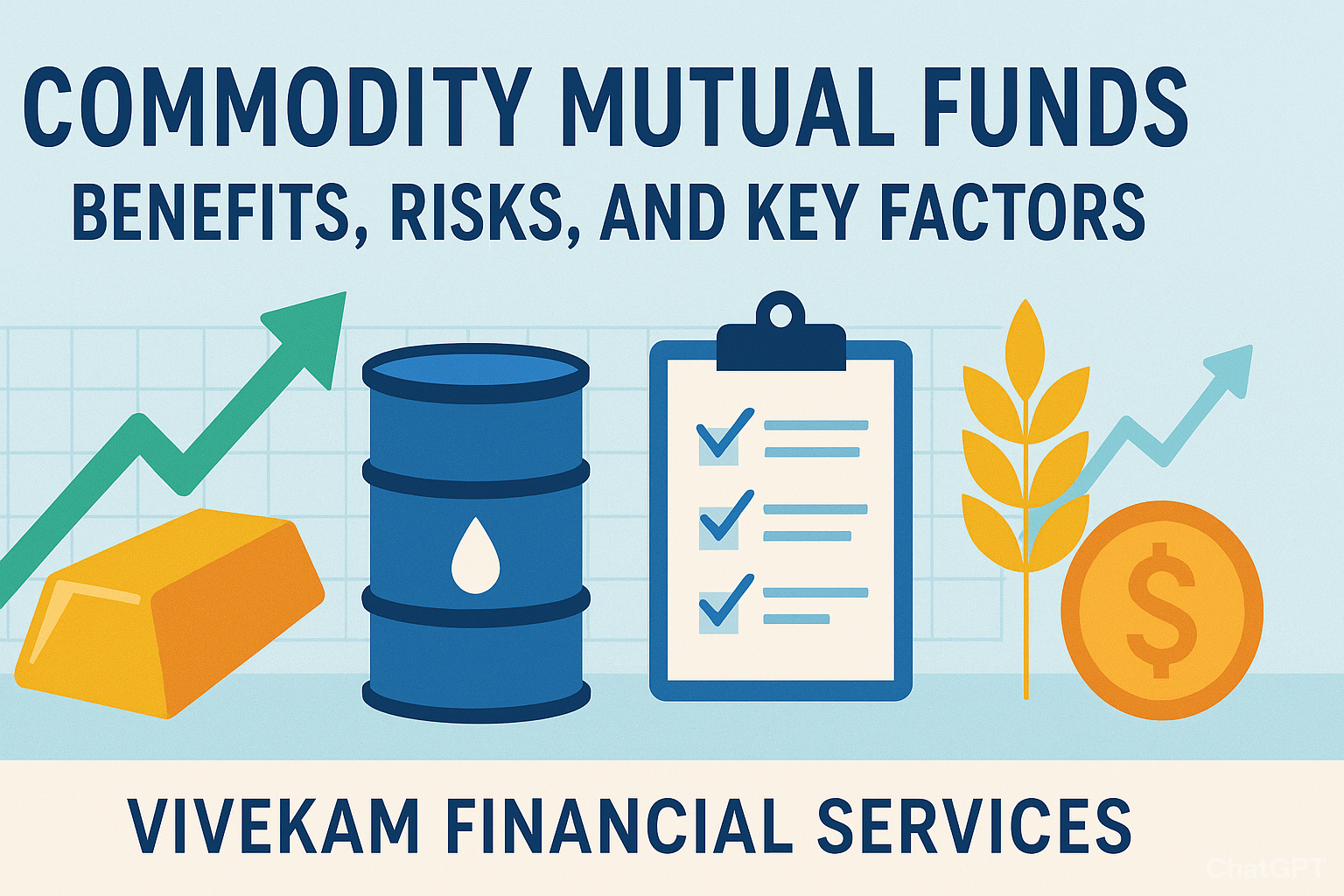Commodity Mutual Funds: Benefits, Risks, and Key Factors
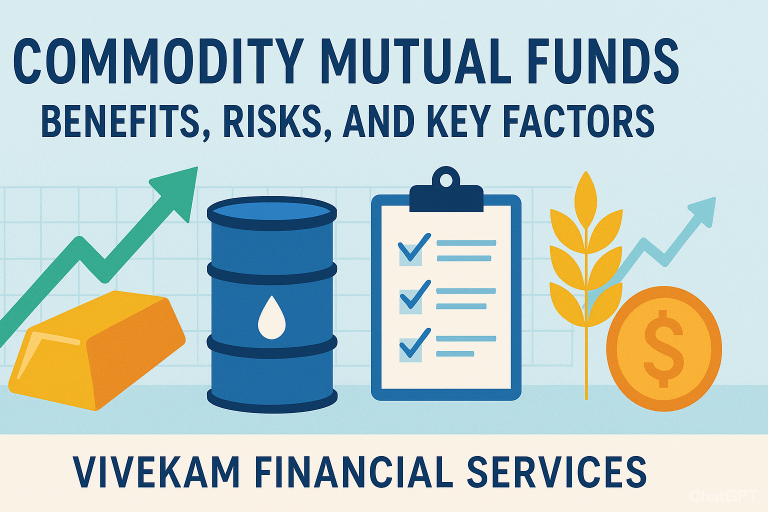
Introduction to Commodity Mutual Funds
Let’s be honest: when most people think “mutual funds,” they picture stocks and bonds — not barrels of oil or bags of wheat. But commodities are the backbone of the global economy, and commodity mutual funds let regular investors tap into that world.
In simple terms, these funds invest in raw materials like gold, silver, oil, or even coffee beans — either directly or through related instruments. And the best part? You don’t need a warehouse to store gold bars or coffee sacks.
With inflation biting and markets swinging wildly, commodity mutual funds are becoming a smart way to diversify, protect wealth, and ride global demand trends.
What Are Commodity Mutual Funds?
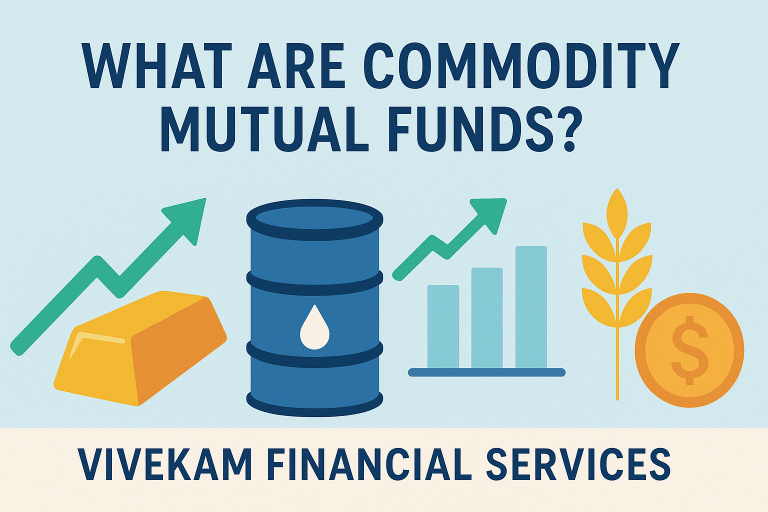
Think of a commodity mutual fund as a basket of raw materials managed by professionals. Instead of buying commodities directly (which is messy and risky), you invest in a fund that pools money from many investors and spreads it across commodity-linked assets like ETFs, futures contracts, or shares of commodity producers.
In short: you get the upside of commodities without needing a trading terminal or a vault in your basement.
Why Investors Consider Commodity Funds
Investors don’t flock to commodity mutual funds just for fun. They’re after three things:
- Inflation protection – when prices rise, commodities often rise with them.
- Diversification – adding a new asset class balances out risks from stocks and bonds.
- Crisis hedge – gold and other commodities usually hold strong when markets tank.
If you’ve ever wished your portfolio had a “safety net,” this is it.
Types of Commodity Mutual Funds
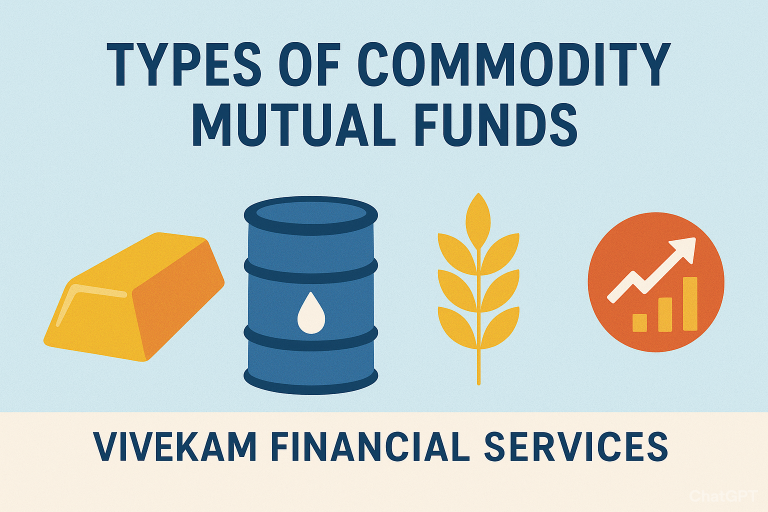
Precious Metals Funds (Gold, Silver, Platinum)
Gold funds dominate in India — no surprise, given our cultural love affair with it. Silver and platinum funds are niche players but still worth watching.
Energy-Based Commodity Funds (Oil, Gas, Renewable Energy)
These funds ride the global energy rollercoaster. When oil demand spikes, they shine. But they can tumble fast during oversupply or geopolitical shocks.
Agriculture and Industrial Commodity Funds
From wheat to copper, these funds invest in the raw stuff that powers daily life. Riskier, but sometimes they catch trends before stock markets do.
Diversified Commodity Funds
The “thali” of commodity investing — a mix of different categories to balance flavors (and risks).
Benefits of Commodity Mutual Funds
Portfolio Diversification
They’re like adding a new instrument to your investment orchestra — the sound is richer and less monotonous.
Hedge Against Inflation
When everything gets more expensive, commodities often climb too. That makes them a natural shield against inflation.
Potential for High Returns
Commodity prices can swing wildly, and if you’re positioned right, those swings mean gains.
Accessibility for Retail Investors
Forget about buying oil barrels or silver bars. Commodity mutual funds make it simple, regulated, and beginner-friendly.
Risks of Commodity Mutual Funds
Market Volatility and Price Fluctuations
Commodity prices don’t move politely — they jump, crash, and spike overnight.
Geopolitical and Economic Risks
Wars, sanctions, and trade bans can cause sudden shocks.
Regulatory and Taxation Concerns
Governments keep a close eye on commodities, and policy changes can eat into returns.
Liquidity and Management Costs
Some funds are costlier to run, and niche commodities may not sell quickly.
Commodity Mutual Funds vs Commodity ETFs
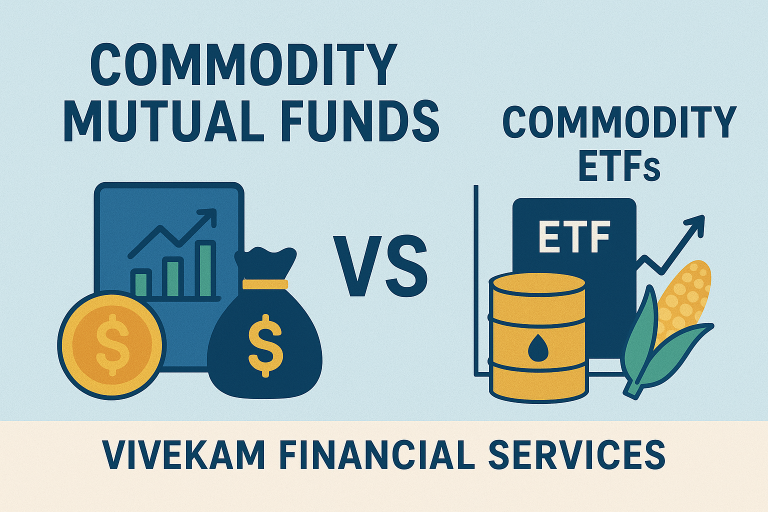
Structure and Investment Strategy
- Mutual Funds: Professionally managed baskets of commodities.
- ETFs: Track a commodity index and trade like stocks.
Costs and Expense Ratios
- Mutual funds = higher fees (because of management).
- ETFs = cheaper, mostly passive.
Liquidity and Trading Flexibility
- ETFs = real-time buying/selling.
- Mutual funds = priced once a day.
Which One Should You Choose?
If you want SIP-friendly, guided management → Mutual funds.
If you prefer DIY trading, low cost → ETFs.
How to Invest in Commodity Mutual Funds
Steps to Start Investing in India
- Get your KYC done.
- Pick a fund house.
- Decide between SIP or lump sum.
- Keep an eye on performance.
Online Platforms and Fund Houses
Groww, Zerodha, ET Money, or AMC websites — all make it easy.
Key Documents and KYC Requirements
PAN, Aadhaar, photo, and bank details. Done.
Best Commodity Mutual Funds in India
Top-Rated Gold and Precious Metals Funds
- Nippon India Gold Savings Fund
- SBI Gold Fund
- ICICI Prudential Gold Savings
Popular Energy and Diversified Commodity Funds
- Aditya Birla Sun Life Commodity Equities Fund
- Kotak Commodity Services Fund
Performance Trends Over the Last 5 Years
- Gold funds = steady climbers during crises.
- Diversified funds = volatile but rewarding.
- Energy funds = feast-or-famine, depending on oil prices.
Factors Affecting Commodity Fund Performance
Global Demand and Supply Dynamics
When China builds, copper rises. When crops fail, agri funds soar.
Inflation and Interest Rates
Inflation boosts commodities. High interest rates can cool demand.
Currency Fluctuations and Geopolitics
Since most commodities are USD-priced, rupee-dollar moves matter a lot. Add geopolitics, and you’ve got a cocktail of risk.
Who Should Invest in Commodity Mutual Funds?
Ideal Investor Profiles
- Risk-tolerant investors.
- Those who want a hedge against inflation.
- People are bored with only stocks and bonds.
Time Horizon and Risk Appetite
Best if you can commit for 3–5 years. Not for the faint-hearted.
Taxation of Commodity Mutual Funds in India
Short-Term Capital Gains (STCG)
Sold before 36 months? Taxed per your income slab.
Long-Term Capital Gains (LTCG)
Held over 36 months? 20% tax with indexation benefit.
Expert Tips for Maximizing Returns
Diversification Across Asset Classes
Mix commodities with equity, debt, and real estate — don’t go all in.
Regular Monitoring and Exit Strategy
Commodity cycles turn fast. Keep an eye and know when to get out.
Frequently Asked Questions (FAQs)
1. Are commodity mutual funds better than stocks?
Not better, just different. They balance risks when stocks misbehave.
2. Can I invest in commodity funds with SIP?
Yes! Many funds allow SIP starting as low as ₹500.
3. What are the best commodity mutual funds in India?
SBI Gold Fund, Nippon India Gold Savings, and Aditya Birla Sun Life Commodity Fund top the charts.
4. Do commodity funds guarantee inflation protection?
No guarantees, but they usually rise when inflation does.
5. How safe are commodity funds for beginners?
Safer than trading futures, but still volatile. Beginners should stick to gold funds.
6. What is the minimum investment required?
Usually ₹500–₹1000 via SIP.
Conclusion
Commodity mutual funds aren’t the “main dish” of an investment portfolio — but they’re a fantastic side plate. They add flavor, balance, and protection when markets get tough.
If you’re looking to hedge against inflation, diversify beyond stocks, and tap into global trends, commodity funds deserve a spot in your portfolio. Just remember: they swing fast, so pair them with long-term discipline and a diversified strategy.

